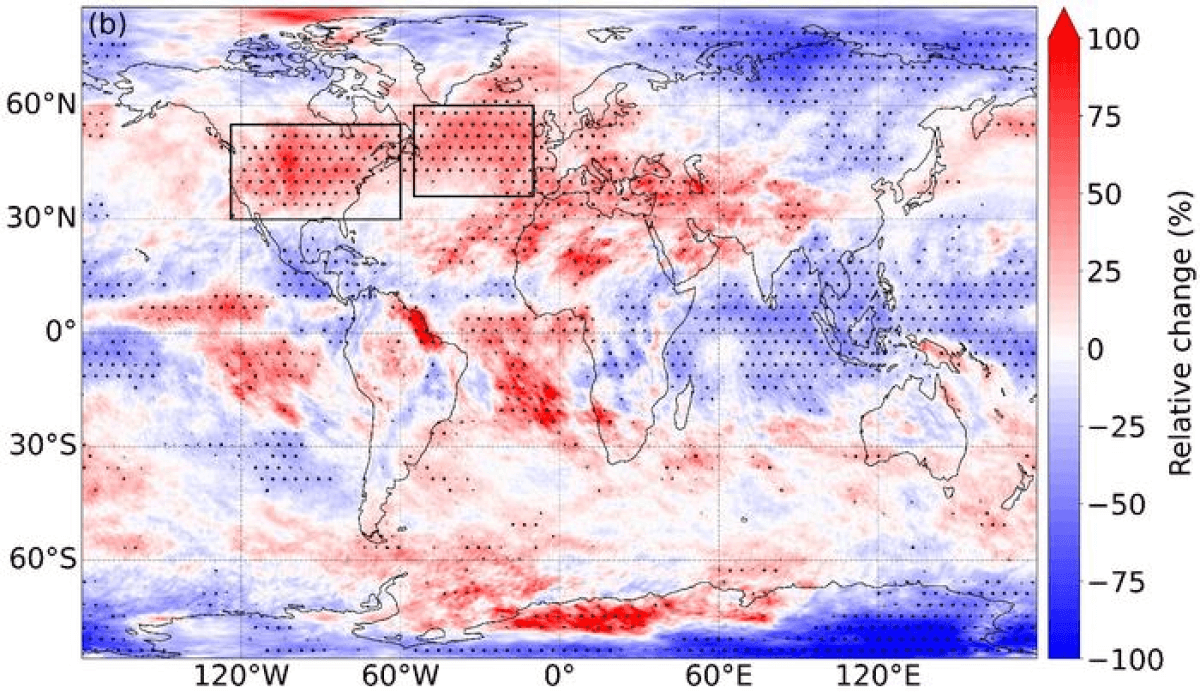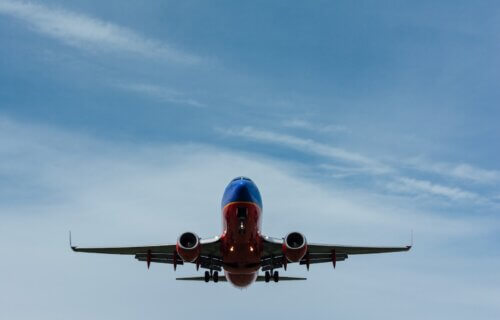READING, United Kingdom — The next time you take a flight, you might want to leave you seat belt on the entire time. New research indicates that air travel has become increasingly bumpy over the past 40 years, primarily due to global warming. The study suggests that potentially catastrophic aviation turbulence has intensified as the world continued to warm between 1979 and 2020. Transatlantic flights appear to be the most at risk for turbulence, according to scientists.
Conducted by a team at the University of Reading, the research demonstrates that clear-air turbulence — an invisible yet hazardous phenomenon for aircraft — has escalated in various regions worldwide since the 1980s.
At a typical point over the North Atlantic, one of the world’s busiest air routes, the total annual duration of severe turbulence saw a notable increase of 55 percent. It went up from 17.7 hours in 1979 to 27.4 hours in 2020. Moreover, moderate turbulence experienced a growth of 37 percent, rising from 70.0 to 96.1 hours. Light turbulence also increased, albeit by a lesser margin of 17 percent, from 466.5 to 546.8 hours. These findings are published in the journal Geophysical Research Letters.
The researchers suggest that these increases align consistently with the impacts of climate change. They theorize that the rise in CO2 emissions, causing warmer air, is amplifying windshear within the jet streams. This phenomenon, in turn, is leading to a strengthening of clear-air turbulence, not just over the North Atlantic, but also across the globe.

“Turbulence makes flights bumpy and can occasionally be dangerous. Airlines will need to start thinking about how they will manage the increased turbulence, as it costs the industry $150–500m annually in the USA alone. Every additional minute spent travelling through turbulence increases wear-and-tear on the aircraft, as well as the risk of injuries to passengers and flight attendants,” explains PhD researcher Mark Prosser in a university release.
While the United States and North Atlantic have experienced the largest increases in air turbulence, the study authors also found that other busy flight routes over Europe, the Middle East, and the South Atlantic are also seeing significant increases in rough air.
“Following a decade of research showing that climate change will increase clear-air turbulence in the future, we now have evidence suggesting that the increase has already begun. We should be investing in improved turbulence forecasting and detection systems, to prevent the rougher air from translating into bumpier flights in the coming decades,” concludes Professor Paul Williams, an atmospheric scientist at the University of Reading and the study’s co-author.
AI’s 11 suggestions on how to improve the average airline customer experience:
While airlines may not be able to do much about the air they travel through, companies are looking to make their flights as comfortable as possible for those flying the friendly skies. A recent study turned to artificial intelligence to find out how to improve the air travel experience.
- To improve comfort, implement more flexible seating arrangements.
- Automate the disinfecting process for on-plane bathrooms.
- Redesign overhead baggage bins.
- Implement a more personalized cabin environment with seat height and temperature adjustment capabilities.
- Use analytical models to optimize flight schedules and time buffers between flights.
- Use an artificial intelligence-based approach to monitor and ensure equipment health.
- Introduce a more flexible booking policy (no cancellation charges, no change fees, upfront information about costs).
- Provide ticketing agents with better task clarifications, performance-based feedback, and social praise. This should help improve morale and interactions with customers.
- Install more accurate luggage tracking systems by using RFID tags instead of regular barcode tags.
- Provide more frequent and automated baggage related updates to passengers’ phones.
- Use biometrics and blockchain technology to remove the need to present several identification documents at multiple checkpoints in the airport. This would eliminate the need for passengers to show a boarding pass, passport, and ID.
-
South West News Service writer Stephen Beech contributed to this report.


By adding these simple words they have guaranteed their degree and enhanced their future employment status ” ..past 40 years, primarily due to global warming.”
By never using actual measurement but using ‘feelings’ of turbulence, they announce that this is not science but ‘Flakeism”
The biggest load of crap since my herd of elephants dumped on the lawn.